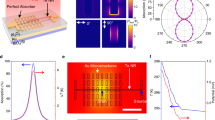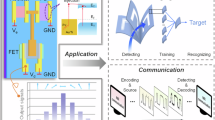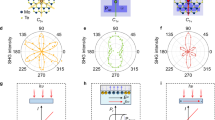Abstract
WHEN, last May, Comet Arend–Roland became a bright naked-eye object in the northern hemisphere, we carried out a series of photoelectric measures of the polarization of its coma at different phase angles. The technique employed utilized a piece of ‘Polaroid’ attached to a rotatable six-position disk contained in the photometer. This enables measurements of intensity to be made as the ‘Polaroid’ is turned through 60 dog. for each position of the disk. Standard B and V filters employed in the UBV system, together with interference filters having peak transmissions centred on 5890 A., 5000 A., 4700 A. and 4300 A. and half-widths of 80 A. were used for isolating the different wave-lengths. Each of the three circular apertures behind the ‘Polaroid’ transmitted 3.7 square minutes of arc of the sky.
This is a preview of subscription content, access via your institution
Access options
Subscribe to this journal
Receive 51 print issues and online access
$199.00 per year
only $3.90 per issue
Buy this article
- Purchase on SpringerLink
- Instant access to full article PDF
Prices may be subject to local taxes which are calculated during checkout
Similar content being viewed by others
References
Candy, M. P., Int. Astron. Union Circ. No. 1585 (Feb. 20, 1957).
Wellman, P., Int. Astron. Union Circ. No. 1596 (April 29, 1957).
Ohman, Y., Stockholm Annals, 13, No. 11 (1941).
Author information
Authors and Affiliations
Rights and permissions
About this article
Cite this article
BAPPU, M., SINVHAL, S. Polarization of Comet Arend–Roland. Nature 180, 1410 (1957). https://doi.org/10.1038/1801410a0
Issue date:
DOI: https://doi.org/10.1038/1801410a0



